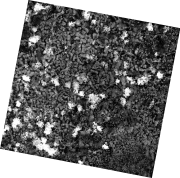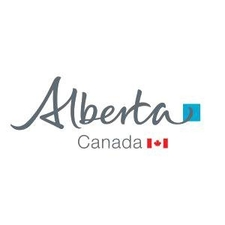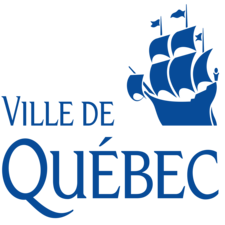Géomatique
Type of resources
Available actions
Keywords
Contact for the resource
Provided by
Years
Formats
Representation types
Update frequencies
status
Service types
Scale
-
This project was carried out thanks to the financial support of component 2.2 of the MAMAH Regions and Rurality Fund (FRR). The updates were made using orthophotos from spring 2020. The project covers the territory of the MRCs of Haut-Saint-Laurent, Haute-Yamaska, Haute-Yamaska, Roussillon, Rouville, Vaudreuil-Soulanges as well as the agglomeration of Longueuil.**This third party metadata element was translated using an automated translation tool (Amazon Translate).**
-
This is a legacy product that is no longer supported. It may not meet current government standards. Canada3D is a digital elevation model (DEM) produced by the Canadian Forestry Service, Ontario region. The DEM consists of an ordered array of ground elevations providing coverage of the Canadian landmass. It has been derived from the cells of the Canadian Digital Elevation Data (CDED) at the 1:250 000 scale. Canada3D is available in two levels of detail: grids regularly spaced at 30 or 300 arc seconds. Canada3D 30 and 300 are recorded separately in ASCII format. The elevation values are expressed in metres with respect to mean sea level (MSL), in accordance with the North American Datum of 1983 (NAD83).
-

The 1 cm resolution digital surface model (DSM) was created from unmanned aerial vehicle (UAV) imagery acquired from a single day survey, July 28th 2016, in Cambridge Bay, Nunavut. Five control points taken from a Global Differential Positioning System were positioned in the corners and the center of the vegetation survey. The DSM covering 525m2 was produced by Canada Centre for Remote Sensing /Canada Centre for Mapping and Earth Observation. The UAV survey was completed in collaboration with the Canadian High Arctic Research Station (CHARS) for northern vegetation monitoring research. For more information, refer to our current Arctic vegetation research: Fraser et al; "UAV photogrammetry for mapping vegetation in the low-Arctic" Arctic Science, 2016, 2(3): 79-102. http://www.nrcresearchpress.com/doi/abs/10.1139/AS-2016-0008
-

In 2015, the Earth Observation Team of the Science and Technology Branch (STB) at Agriculture and Agri-Food Canada (AAFC) repeated the process of generating annual crop inventory digital maps using satellite imagery to for all of Canada, in support of a national crop inventory. A Decision Tree (DT) based methodology was applied using optical (Landsat-8) and radar (RADARSAT-2) based satellite images, and having a final spatial resolution of 30m. In conjunction with satellite acquisitions, ground-truth information was provided by provincial crop insurance companies and point observations from the BC Ministry of Agriculture and our regional AAFC colleagues.
-

The 1 cm resolution vegetation digital height model was extracted using a bare earth model and digital surface model (DSM) derived from unmanned aerial vehicle (UAV) imagery acquired from a single day survey on July 28th 2016, in Cambridge Bay, Nunavut. The mapping product covers 525m2 and was produced by Canada Centre for Remote Sensing /Canada Centre for Mapping and Earth Observation. The UAV survey was completed in collaboration with the Canadian High Arctic Research Station (CHARS) for northern vegetation monitoring research. For more information, refer to our current Arctic vegetation research: Fraser et al; "UAV photogrammetry for mapping vegetation in the low-Arctic" Arctic Science, 2016, 2(3): 79-102. http://www.nrcresearchpress.com/doi/abs/10.1139/AS-2016-0008
-
La donnée a été créée ou dérivée à partir d'images de véhicules aériens non habités (UAV) acquises à partir d'une enquête d'une journée, le 28 juillet 2016, à Cambridge Bay, au Nunavut. Cinq points de contrôle provenant d'un système de positionnement différentiel global ont été positionnés dans les coins et au centre de l'étude de la végétation. Les jeux de données suivants couvrent une superficie de 525m2 et ont été produits par le Centre canadien de télédétection / Centre canadien de cartographie et d'observation de la Terre: - UAV modèle d'hauteur de la végétation, Cambridge Bay, Nunavut - UAV modèle numérique de surface (MNS) dans Cambridge Bay, Nunavut - Parcelle de végétation - UAV orthomosaïque de Cambridge Bay, Nunavut - Parcelle de végétation L'enquête sur les UAV a été menée en collaboration avec La Station canadienne de recherche dans l’Extrême-Arctique (SCREA) pour la recherche sur la surveillance de la végétation nordique. Pour plus de renseignement, consultez nos travaux de recherche actuels: Fraser et al; ""UAV photogrammetry for mapping vegetation in the low-Arctic"" Arctic Science, 2016, 2(3): 79-102, 10.1139/as-2016-0008 http://www.nrcresearchpress.com/doi/abs/10.1139/AS-2016-0008
-

The distribution of Base - Small Scale Topographic data to the public is provided by AltaLIS Ltd., distributing agent for the Alberta Data Partnerships Ltd. (ADP), formerly Spatial Data Warehouse Ltd. (SDW), on behalf of the Government of Alberta. The Base - Small Scale Topographic data includes a vector mapping database created by Alberta Environment and Parks and includes the following: 1:250 000 Base, 1:1 000 000 Base and 1:2 000 000 Base.
-

This is a legacy product that is no longer supported. It may not meet current government standards. The Canadian Digital Surface Model (CDSM) is part of Natural Resources Canada's altimetry system designed to better meet the users' needs for elevation data and products. The 0.75-second (~20 m) CDSM consists of a derived product from the original 1-second (30 m) Shuttle Radar Topographic Mission (SRTM) digital surface model (DSM). In these data, the elevations are captured at the top of buildings, trees, structures, and other objects rather than at ground level. A CDSM mosaic can be obtained for a pre-defined or user-defined extent. The coverage and resolution of a mosaic varies according to the extent of the requested area. Derived products such as slope, shaded relief and colour shaded relief maps can also be generated on demand by using the Geospatial-Data Extraction tool. Data can then be saved in many formats. The pre-packaged GeoTiff datasets are based on the National Topographic System of Canada (NTS) at the 1:50 000 scale; the NTS index file is available in the Resources section in many formats.
-

Mapping of neighborhoods in Quebec City.**This third party metadata element was translated using an automated translation tool (Amazon Translate).**
-

This collection is a legacy product that is no longer supported. It may not meet current government standards. This inventory presents chronologically the satellite images acquired, orthorectified and published over time by Natural Resources Canada. It is composed of imagery from the Landsat7 (1999-2003) and RADARSAT-1 (2001-2002) satellites, as well as the CanImage by-product and the control points used to process the images. Landsat7 Orthorectified Imagery: The orthoimage dataset is a complete set of cloud-free (less than 10%) orthoimages covering the Canadian landmass and created with the most accurate control data available at the time of creation. RADARSAT-1 Orthorectified Imagery: The 5 RADARSAT-1 images (processed and distributed by RADARSAT International (RSI) complete the landsat 7 orthoimagery coverage. They are stored as raster data produced from SAR Standard 7 (S7) beam mode with a pixel size of 15 m. They have been produced in accordance with NAD83 (North American Datum of 1983) using the Universal Transverse Mercator (UTM) projection. RADARSAT-1 orthoimagery were produced with the 1:250 000 Canadian Digital Elevation Data (CDED) and photogrammetric control points generated from the Aerial Survey Data Base (ASDB). CanImage -Landsat7 Orthoimages of Canada,1:50 000: CanImage is a raster image containing information from Landsat7 orthoimages that have been resampled and based on the National Topographic System (NTS) at the 1:50 000 scale in the UTM projection. The product is distributed in datasets in GeoTIFF format. The resolution of this product is 15 metres. Landsat7 Imagery Control Points: the control points were used for the geometric correction of Landsat7 satellite imagery. They can also be used to correct vector data and for simultaneously displaying data from several sources prepared at different scales or resolutions.
 Arctic SDI catalogue
Arctic SDI catalogue
